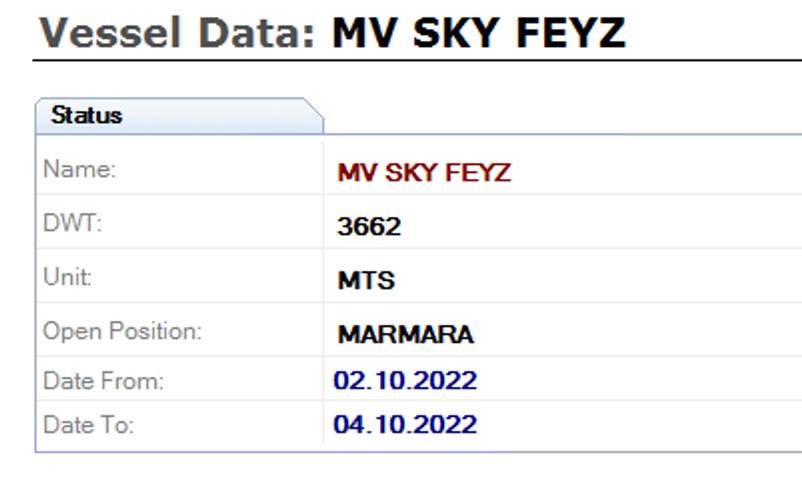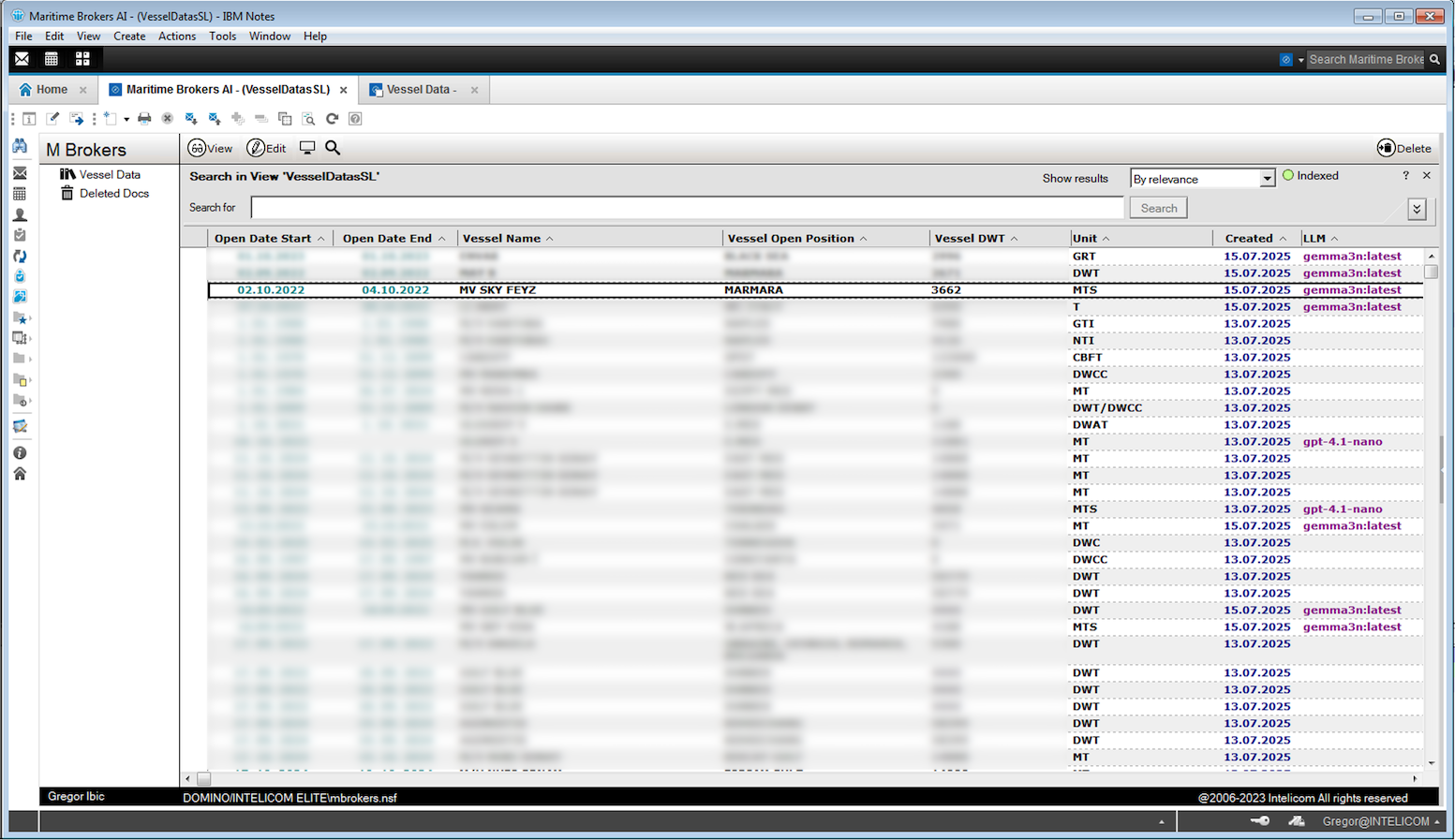In the fast-paced world of maritime logistics and motor vessel brokering, timely access to accurate information can be the difference between a secured deal and a missed opportunity. Much of the data exchange in this domain still occurs through unstructured emails—daily position lists, cargo offers, vessel availability updates, and chartering negotiations. These emails, often dense with domain-specific jargon and irregular formatting, present a major challenge for automation.
Modern AI tools, however, are transforming this landscape by parsing these emails into structured, actionable data that can be queried, analyzed, and integrated into digital workflows.
The Problem: Unstructured Data Chaos
Motor vessel brokering emails typically follow no standard format. A single email might include multiple vessel descriptions, cargo opportunities, laycan periods, or even embedded images and attachments. For example:
Subject: MV STARLIGHT – Open Amsterdam 22 Jul – 28K DWT
MV STARLIGHT – 28,000 DWT – Built 2008 – Open Amsterdam 22 Jul – Next port unknown
Looking for grains to MED – redelivery options flexible.
T/C or voyage considered.
Such a message contains critical information but in an inconsistent and free-text format. Manually parsing hundreds of such messages daily is inefficient and prone to errors.
The objective is to convert the data into a structured format that allows easy filtering and searching by specific criteria.

The Solution: AI-Powered Email Parsing
AI tools can extract structured data from these emails using techniques from Natural Language Processing (NLP) and machine learning. The key components of such a pipeline include:
1. Email Ingestion
Using tools like Microsoft Graph API, Gmail API, or IMAP clients, emails can be fetched automatically in real time. Attachments such as PDFs or Word documents can also be processed using OCR or document parsers.
2. Preprocessing & Cleanup
Before applying AI models, the text is cleaned to remove signatures, disclaimers, repeated headers in email chains, and irrelevant formatting. Libraries such as spaCy, NLTK, or LangChain can help tokenize and normalize text.
3. Information Extraction with NLP
Custom or fine-tuned models based on transformers (e.g., BERT, GPT, or LLaMA) are then used to identify entities and relationships:
- Entities: vessel name, DWT, IMO number, open port, open date, laycan window, cargo type, destination, charter type
- Relations: linking the vessel to its attributes (e.g., MV STARLIGHT → 28,000 DWT → Open Amsterdam 22 Jul)
You can use spaCy’s Named Entity Recognition (NER) with custom entity types trained on domain-specific data or leverage OpenAI’s function calling API to extract fields into JSON objects.
4. Structured Data Output
Once extracted, the data can be formatted into a structured format such as:
{
"vessel": "MV STARLIGHT",
"dwt": 28000,
"built": 2008,
"open_port": "Amsterdam",
"open_date": "2025-07-22",
"cargo": "grains",
"charter_type": ["T/C", "voyage"],
"destination": "MED"
}This structured data can be stored in relational databases, sent to CRM systems, or visualized in dashboards (e.g., Power BI, Metabase, or Grafana).

Practical Tools & Frameworks
Here are a few AI and integration tools commonly used in this workflow:
- OpenAI GPT-4 / GPT-4o
- Google Gemma
- Text processing pipelines with logic chaining
- Data transformation and storage
- Microsoft Graph API
- Access to Outlook/Exchange mailboxes
- Access to HCL Domino mailboxes
Benefits of AI-Based Email Parsing in Shipping
- Time savings: Eliminate hours of manual data entry
- Error reduction: Reduce costly misinterpretations
- Searchability: Enable fast filtering by laycan date, port, vessel type
- Automation: Trigger downstream workflows (alerts, follow-ups, analytics)
- Scalability: Handle thousands of emails across multiple brokers or desks
Challenges and Considerations
- Variability: Each broker may format emails differently; few-shot learning or continual fine-tuning is often needed
- Data quality: Misspellings, abbreviations, and outdated data require robust preprocessing
- Security and privacy: Compliance with GDPR and client confidentiality must be ensured
- Human-in-the-loop: For high-stakes decisions, a manual review stage is advisable
Conclusion
Parsing brokering emails in the maritime industry is no longer a manual burden. With AI tools, companies can unlock the value of their unstructured communication, gaining real-time insights into vessel availability, cargo trends, and market movement. Whether through custom NLP models or out-of-the-box LLMs, the transformation from inbox to structured data lake is now within reach for shipbrokers and logistics firms.
Want to implement this in your own workflow? We can help you sketch out a prototype based on your email structure and target database format.